By Molly Patrick
Mar 22, 2016,
By Molly Patrick
Mar 22, 2016,
Fact: Last week I met a friend for tea and we ate a huge piece of cherry pie together. And then on my way home, I picked up Chinese food for dinner because all I wanted to do was go directly to my couch, eat Mongolian Tofu, and watch House of Cards. Being in my kitchen wasn’t part of that scenario, so I skipped it.
The next morning I made a big green smoothie and I continued eating plant food.
I recommitted.
And this is just how it goes sometimes.
- It’s not the end of the world.
- It doesn’t mean that I’m a failure and every healthy meal that I’ve ever had and will ever have doesn’t count.
- It doesn’t put back on the 12 pounds that I’ve lost since I quit drinking and started being diligent about eating a diet full of whole plant foods.
- It doesn’t make me any less credible in my job.
- It doesn’t make me a bad person.
It means that I ate a huge ass piece of delicious cherry pie followed by Chinese food last week. That’s it.
Here’s the thing. It’s important that you don’t get obsessed with perfection.
Perfection doesn’t exist. And obsession isn’t healthy – whether it’s with donuts or kale.
If you’re the kind of person who can’t have sugar or you’ll go into a sugar bender for the next three months, only looking up to wipe bright blue frosting from your face and brush away chocolate cake crumbs from your hair, then – yeah – maybe you should skip the pie.
Otherwise, keep in mind that eating a Whole-Food Plant-Based diet is a lifestyle. There is no finish line. This isn’t a contest. No one is measuring your success or failure. You aren’t being graded.
It’s how you eat the majority of the time that counts most.
That said, do yourself a solid by being honest about the word majority.
- If you drink a green smoothie every morning and the rest of your day is laced with white flour and cheese, than the majority of your food is not Whole-Food Plant-Based.
- If you eat mainly vegan food, but your meals are lacking vegetables and fruit, the majority of your food is not Whole-Food Plant-Based.
Be honest with your assessment and then do what you have to do to tweak it.
The bottom line is this, don’t make your life miserable by trying to be perfect. Do the best you can, don’t take it too seriously, and when you have to recommit, recommit and move on.
And if you ever wonder how you’re doing on this plant eating journey, check in with yourself and see how you feel physically, mentally and emotionally. Let that determine your progress and let the rest go.
If you’re new to this way of eating or if it’s time for you to recommit, I’ve compiled a cheat sheet to help you determine what is considered Whole-Food Plant-Based and what is not.
Here are the foods that make up the majority of Whole-Food Plant-Based eating. Eat mostly these foods:
- All veggies, including sea veggies
- All fruit
- All beans and legumes
- All whole grains
- All nuts and seeds
Here are the foods that are considered minimally processed and are a-okay when eating a Whole-Food Plant-Based diet. Use these ingredients to round out your meals or add them to recipes:
- Whole wheat or sprouted grain tortillas
- Whole wheat or sprouted grain bread, bagels and English muffins
- Whole wheat, sprouted grain, quinoa, soba and brown rice pasta
- Whole wheat or whole grain flours like buckwheat, spelt, barley, chickpea, brown rice, etc.
- Vital wheat gluten (this should be used sparingly because it is the most processed on this list)
- All herbs and spices
- Non-dairy milk with no additives or sweeteners
- Tofu
- Tempeh
- Sauerkraut and pickles without vinegar
- Shoyu, tamari, Braggs amino acids and coconut aminos
- Vinegars like rice, ume plum, red wine, apple cider, balsamic, etc.
- Nut butters – sugar and salt free
- Nutritional yeast
- Low fat coconut milk (the kind in the can)
- Canned tomato products
- Olives and capers (packed in water, not oil)
- Hot sauce (without oil, sweeteners or additives)
- Dijon Mustard
- Miso (usually white)
- 100% pure maple syrup and other pure sweeteners like brown rice syrup and sorghum syrup (use sparingly)
- Dried fruit (use sparingly)
- Vanilla extract
- Cacao powder and cacao nibs
- Herbal teas
- Coconut water
Here are the foods to avoid when eating a Whole-Food Plant-Based diet:
- All meat
- All poultry
- All seafood
- All dairy products
- Eggs
- All oils (even coconut and olive oil)
- All processed foods
- Faux meats and faux dairy products that contain oil, refined sugar, or processed ingredients
- All soda
- All processed sugar
- Anything containing white flour
- Bottled salad dressings that contain oil and/or sugar
- Processed breakfast cereal
- Cakes, pies, pastries, donuts and all bakery item made from processed ingredients like white flour and sugar.
Alternatively, if you want to know exactly how to eat plant based and don’t know where to start, you’re in luck. We’ve done all the hard work and all you have to do is follow along. Check out our plant fueled meal plans here.
Okay my dear, go do what you gotta do to commit or recommit. You can start by making today’s recipe.
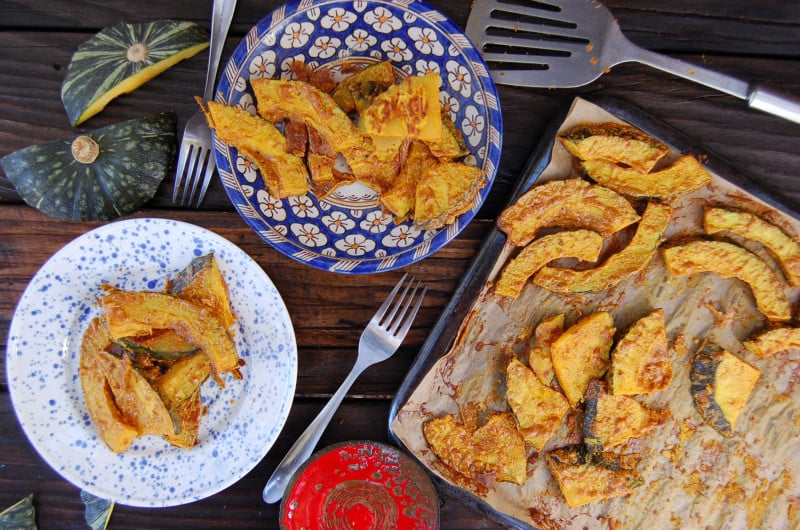
Ingredients
- 1 kabocha squash
Sauce
- 3 tablespoons tahini
- 1 tablespoon soy sauce
- 1 tablespoon rice vinegar
- 2 tablespoons water
- 1 teaspoon paprika
- 3 garlic cloves minced
- 10 turns cracked black pepper
Instructions
- Preheat the oven to 400°F (205°C).
- Make the sauce by adding all of the sauce ingredients into a small mixing bowl and whisking until all of the ingredients are mixed together. Set aside for now.
- Cut the squash in half. Couple of tricks here. Do not try to cut through the stem, cut on one side of it. Use a large sharp knife and be careful because Kabocha is super thick and tough to cut. When you have the squash open, scoop out the seeds.
- Place both halves on the cutting board with the inside of the squash facing down. Cut off each of the ends, just enough to cut off the stem and the very bottom of the squash. Continue to cut half moons slices, about 1/2 inch thick. After you cut each half into 1/2 inch half moons, cut those in half so they aren’t as long.
- Place the squash in a mixing bowl and pour the sauce over it. Mix until all of the squash is covered with sauce.
- Place the squash on a parchment covered baking sheet and bake for 25-30 minutes, until the squash is soft to your liking. The skin should be soft enough to eat.
Notes
14 Comments
Leave a Comment
Love the food that loves you back
Get instant access to thousands of plant-based recipes and meal plans, no credit card or perfection required.

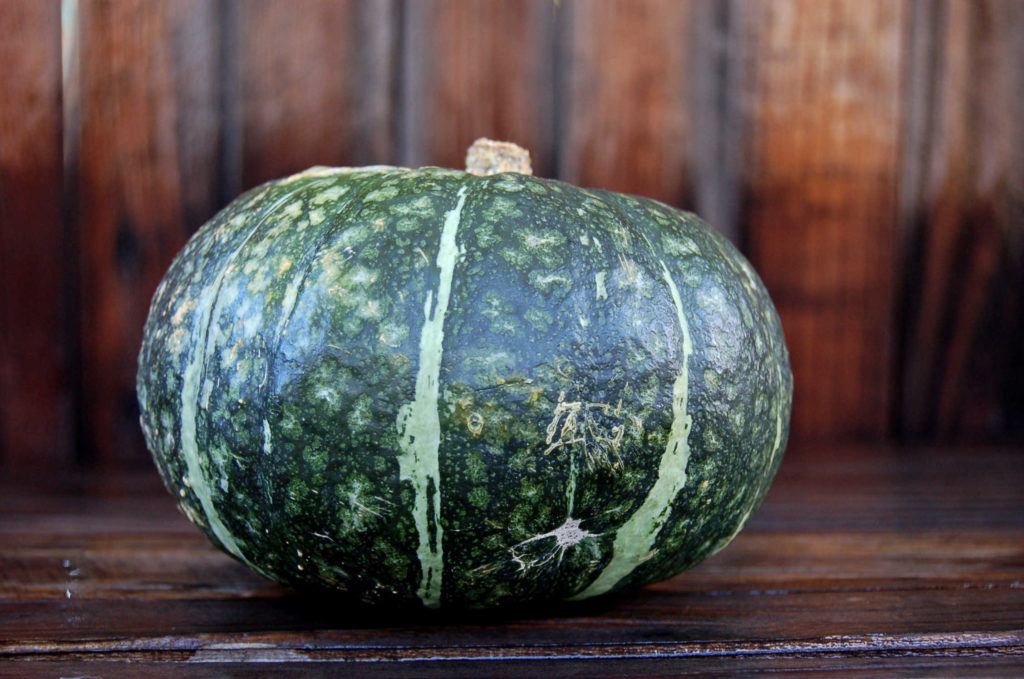
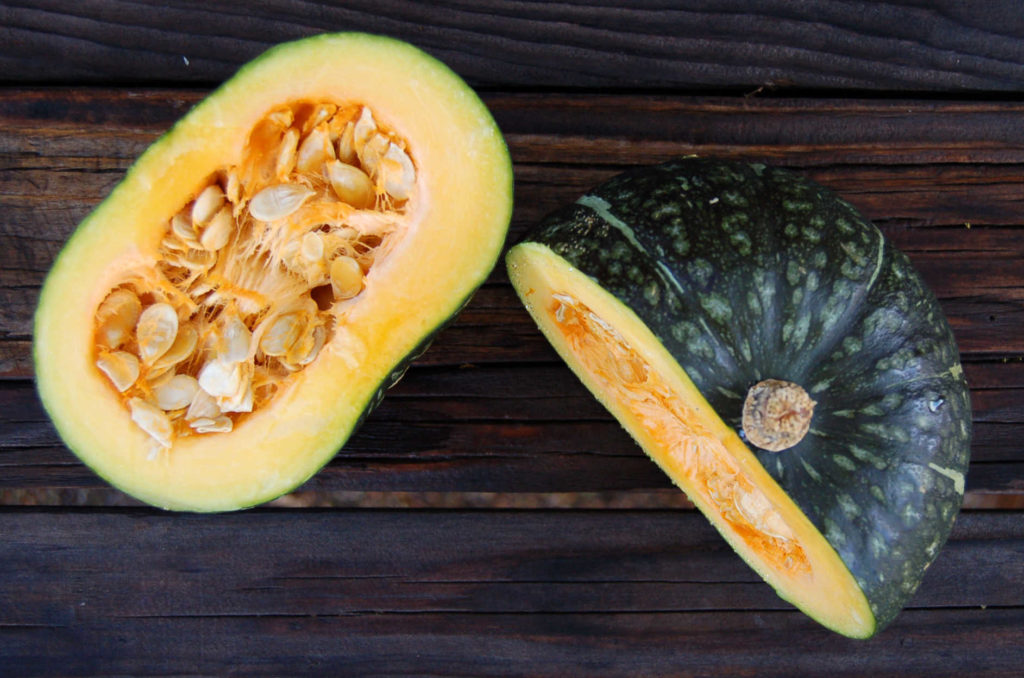

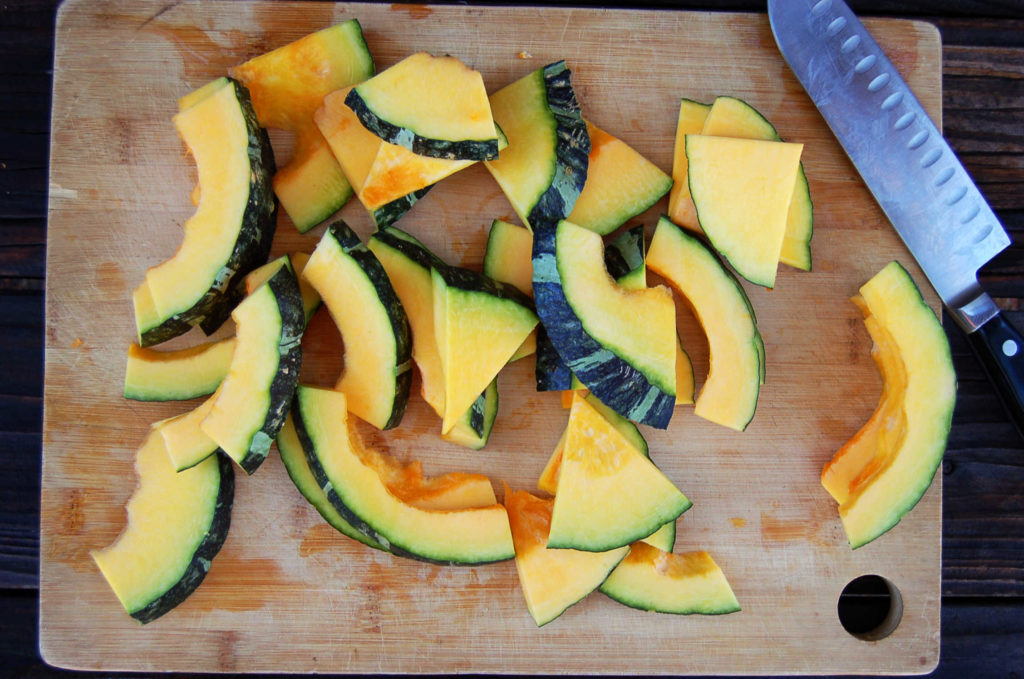
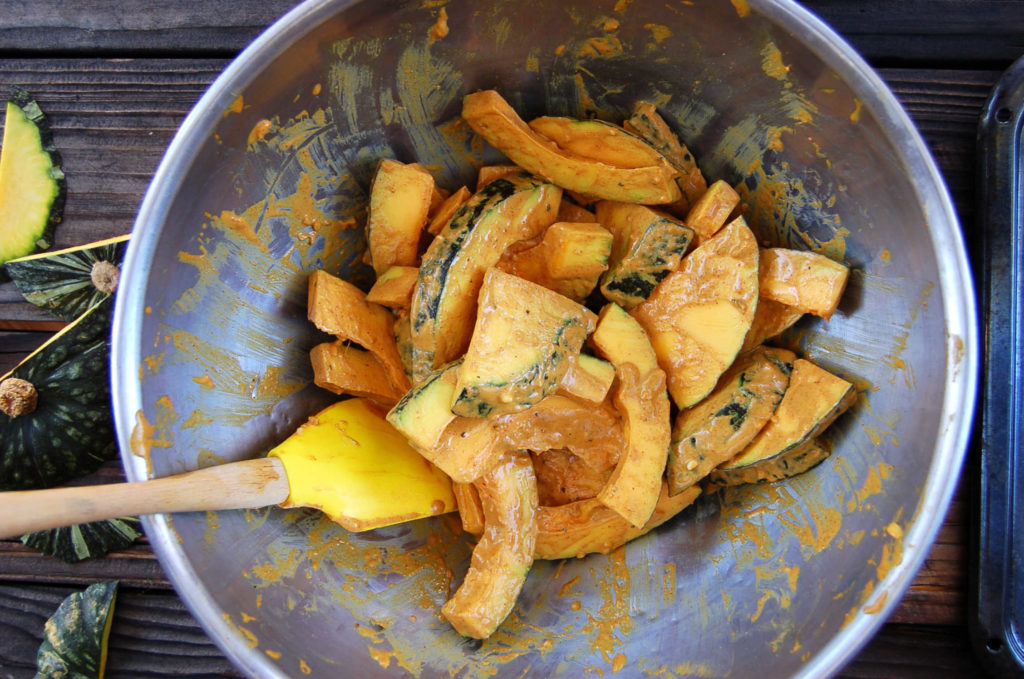
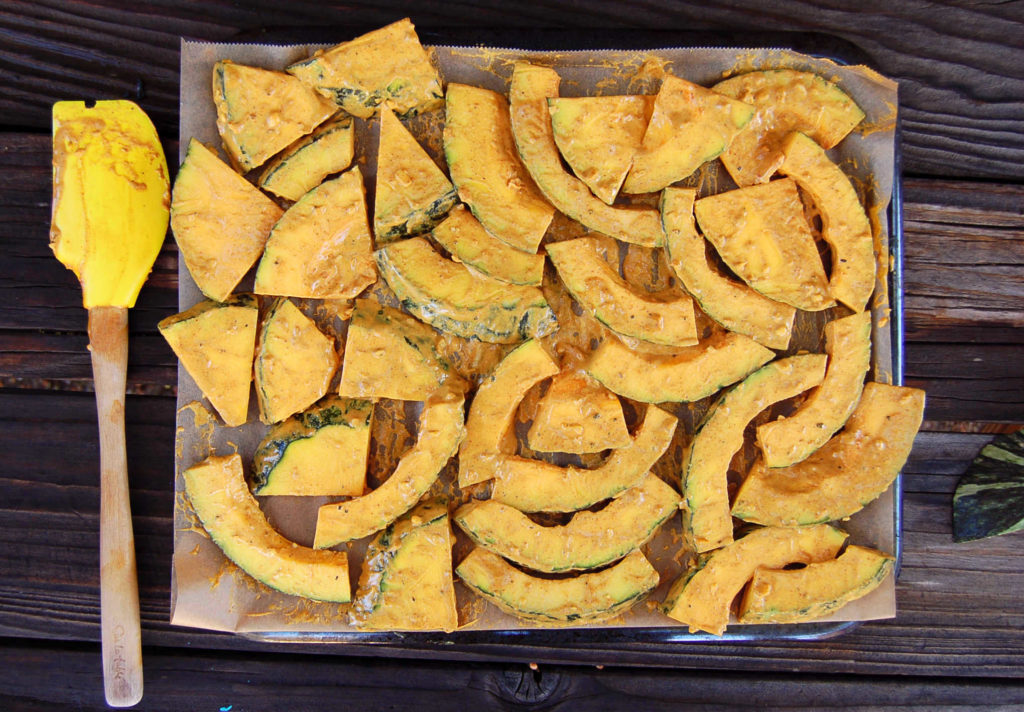

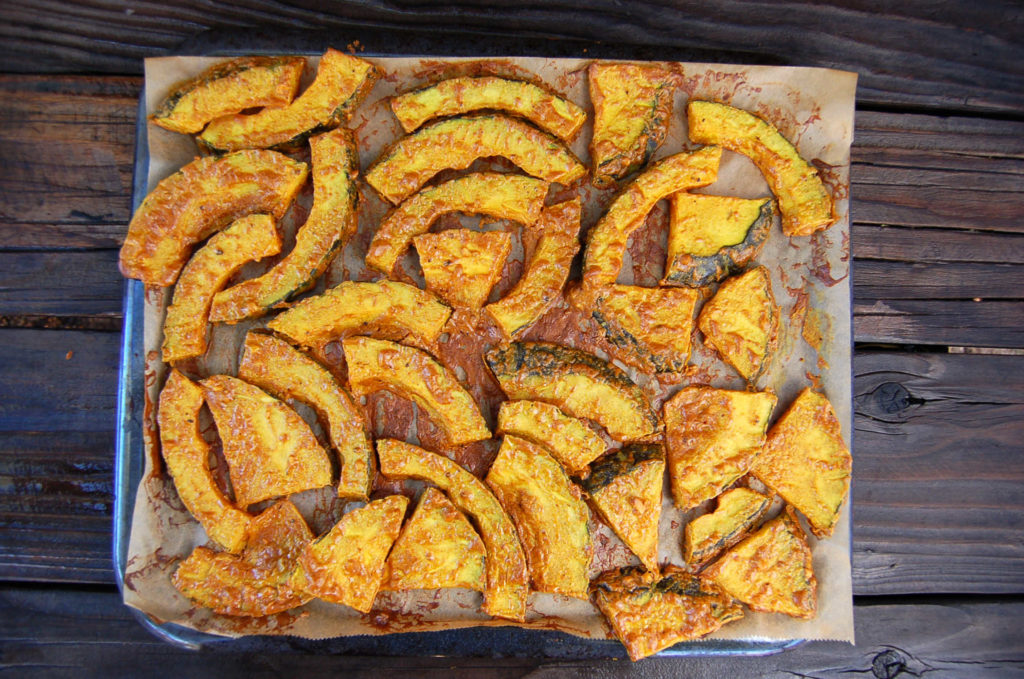


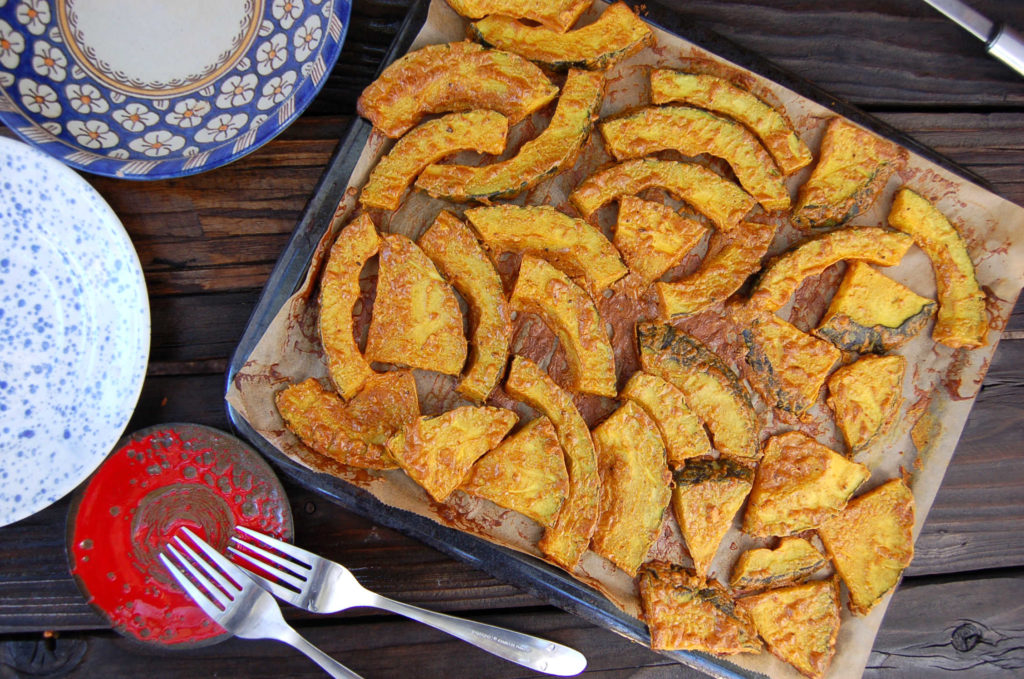
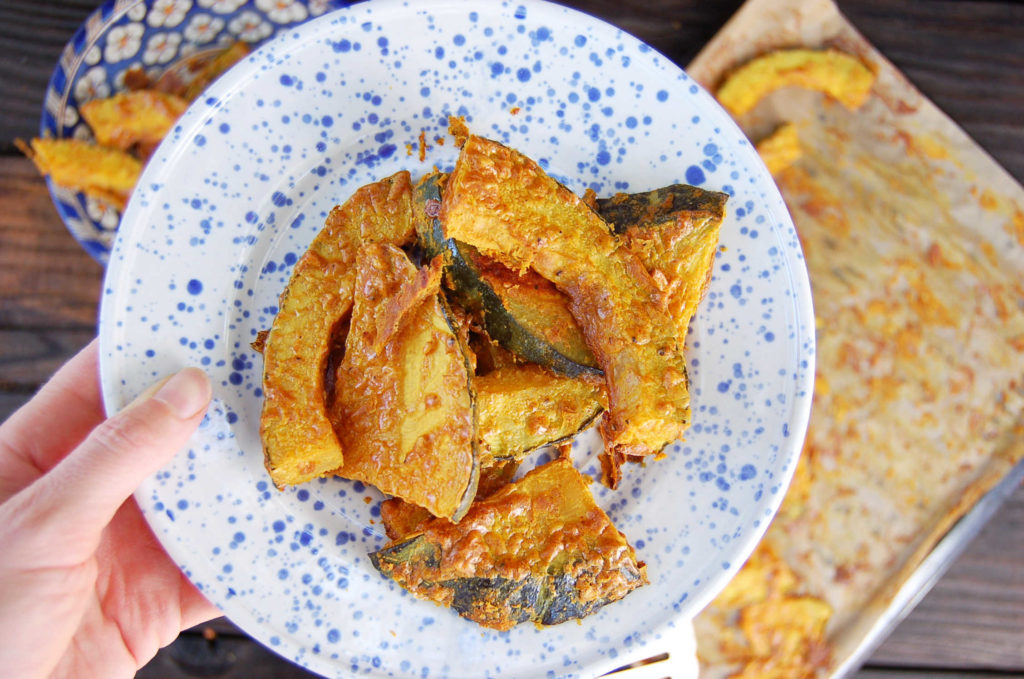
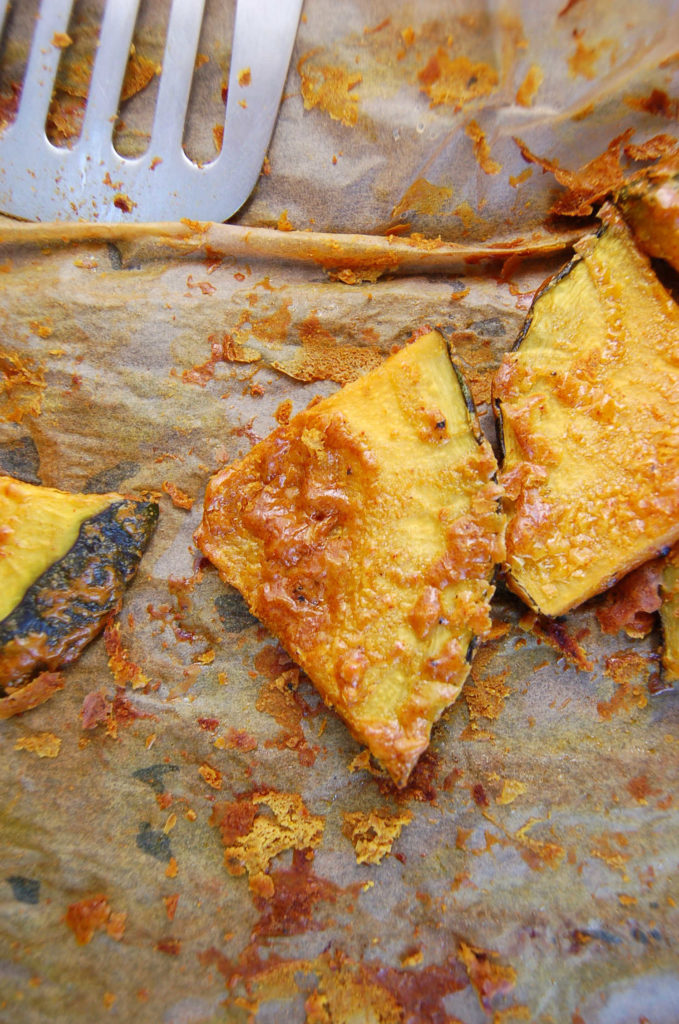


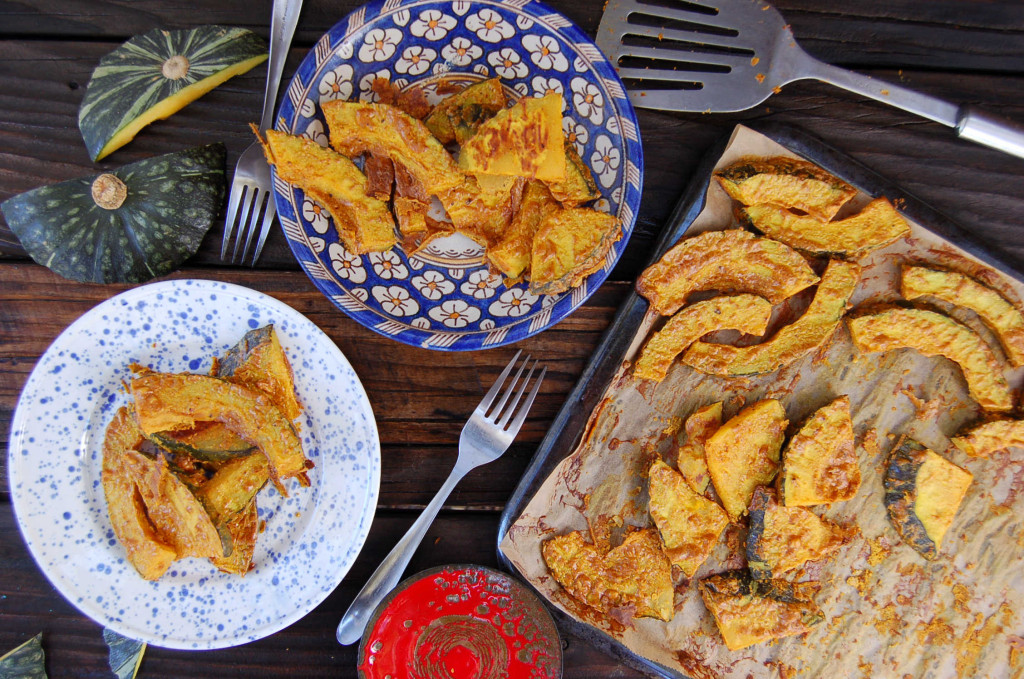
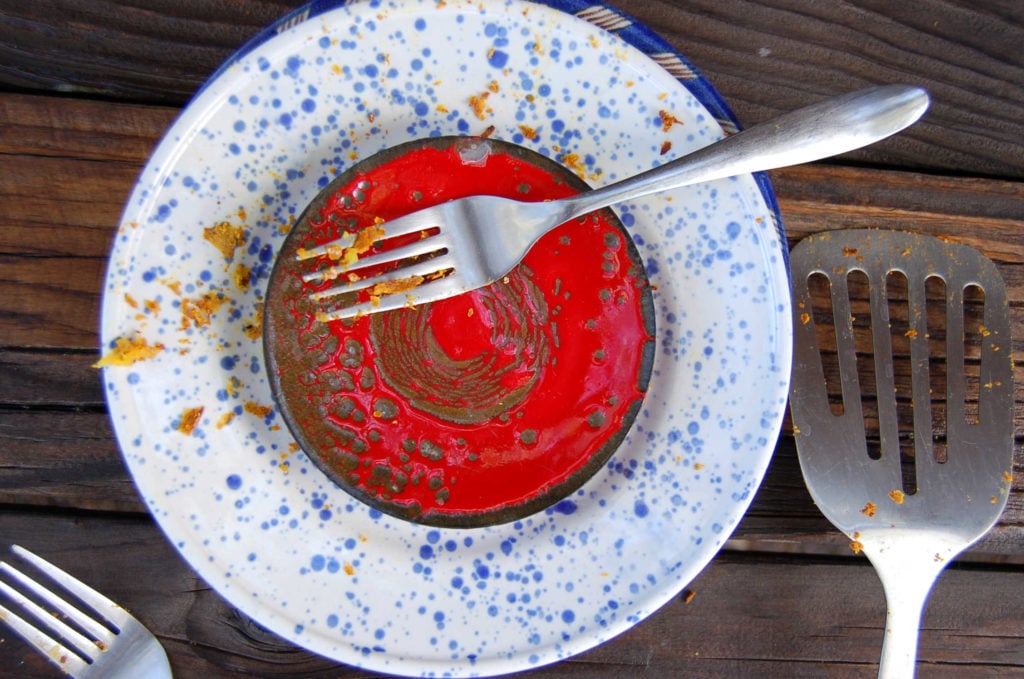


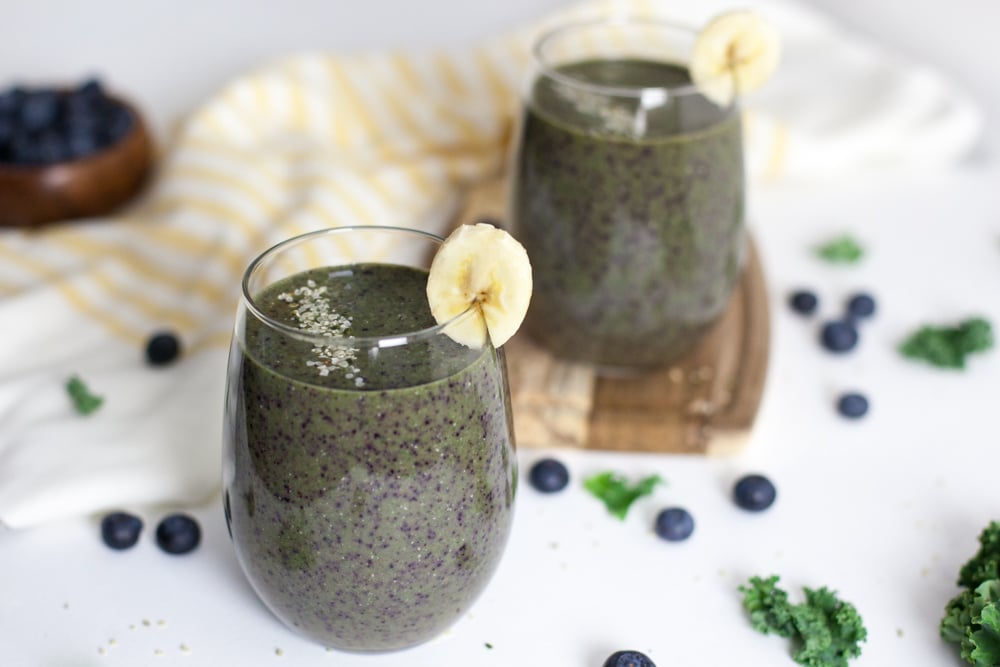

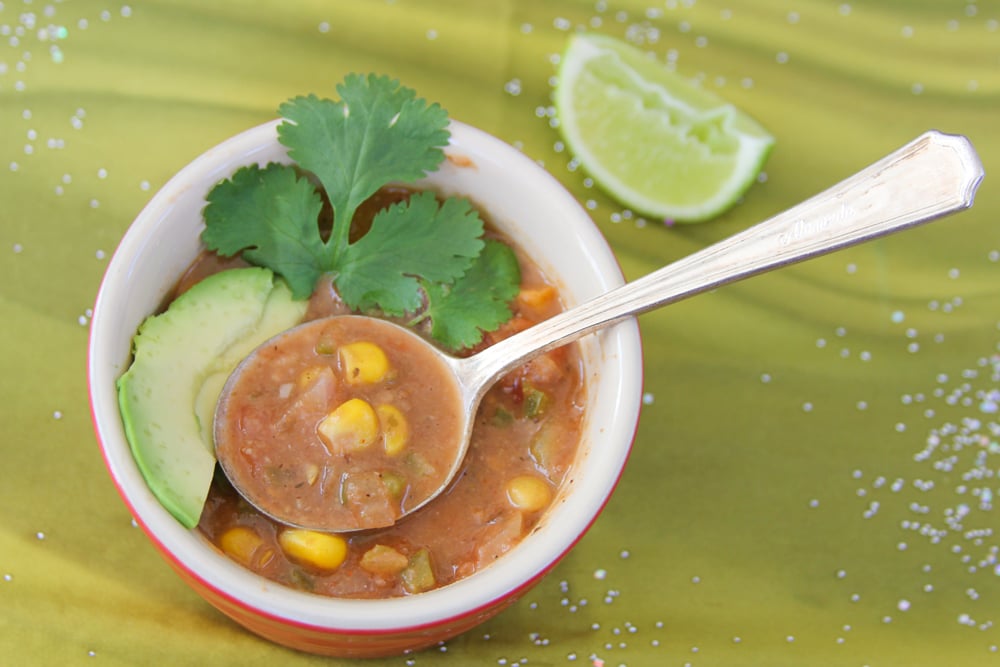







Oh, thank you! Kabocha is my squash of love, and I’ve been wondering how to do it without oil. Not that I used a lot, but I’ve cut it out completely now I can’t wait to try this.
Thanks Annie! It’s amazing how we don’t realize that oil isn’t really needed, huh? 😉
xo
Meghann
Team Dirty Girl
I very interested in finding out more about this way of eating. I’m a diabetic and would love to get healthy and off meds.
Learn how to eat right. And get off of meds
Hi Terri,
Did you watch today’s interview?
This will be perfect for you!
It’s worth the time to hear Frances’ story!
xo
Molly
Hi,
Wow, beautiful veggies recipes, I love the design of your blog! I’ll be back to see what other tasty recipes you come up with!
Thanks for checking out the blog, Jack!
Thank You so mach
This was so fucking good. Close to one of the meals I made when I joined CFDG. Yummo!
I love what you said about perfection. Some well known Plant Based “experts” brag about not eating a single non”compliant” food for decades. And I hate the word “compliant” too. I love your writing, your blog and your recipes. Thank you!
This is my favorite type of pumpkin. It tastes the same as edible pumpkins where I grew up (Ukraine). Butternut squash is too sweet, acorn squash is too watery, this is perfection.
Hi Anna, Thanks for stopping by! Kabocha squash is so delicious. We have a recipe for Kabocha Squash Tacos that you would probably love in our June 1, 2018 #SuperSimple meal plan (it’s not yet migrated to our new classroom but it will be in the coming months). ~Karen
I used this recipe for my first time making kabocha at home. I can’t have soy sauce so I use coconut aminos instead. I also can’t have nightshades so I left the paprika out. I skipped the water and added a little extra rice vinegar. The result was delicious and a big hit with my husband and brother. We agreed that they tasted like delicious healthy fries.
Thanks so much for the recipe!
Good job on making the recipe work for you! Our recipes tend to be super forgiving with substitutions and the end result is still tasty. Thanks for sharing your modifications; we are glad you all enjoyed the kabocha fries. ~Karen